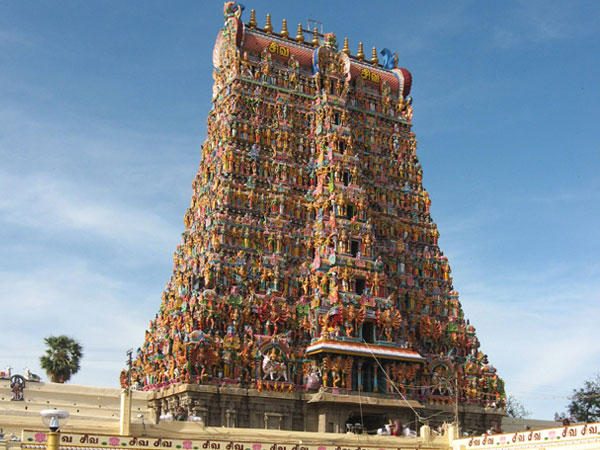
 INDIAN WONDERS
INDIAN WONDERS
Madurai, Tamil Nadu, India.
Meenakshi Sundareswarar Temple or Meenakshi Amman Temple or Tiru-alavai is a historic Hindu temple located in the south side of river Vaigai in the temple city of Madurai, Tamil Nadu. It is dedicated to Parvati who is known as Meenakshi and her consort, Shiva named here as Sundareswarar(beautiful deity). The temple forms the heart and lifeline of the 2500 year old city of Madurai. The complex houses 14 gopurams ranging from 45-50m in height, the tallest being the southern tower, 51.9 metres (170 ft) high, and two golden sculptured vimana(shrine) over sanctum of the main deities. The temple is a significant symbol for the Tamil people, and has been mentioned since antiquity in Tamil literature, though the present structure is built during 1623 to 1655 CE.
The temple attracts 15,000 visitors a day, around 25,000 during Fridays and gets an annual revenue of sixty million INR. There is an estimated 33,000 sculptures in the temple and it was in the list of top 30 nominees of the "New Seven Wonders of the World". The annual 10 day Meenakshi Tirukalyanam festival celebrated during April–May attracts 1 million visitors.
The temple is the geographic and ritual center of the ancient city of Madurai and one of the largest temple complexes in Tamil Nadu. The temple complex is divided into a number of concentric quadrangular enclosures contained by high masonary walls. It is one of the few temples in Tamil Nadu to have four entrances facing four directions. Vishwantha Nayaka allegedly redesigned the city of Madurai in accordance with the principles laid down by Shilpa Shastras relevant to urban planning. These squares continue to retain their traditional names, Aadi, Chittirai, Avani-moola and Masi streets, corresponding to Tamil month names. The complex is in around 45 acres (180,000 m2) and the temple is a massive structure measuring 254 by 237 meters.
The temple is surrounded by 12 gopurams, the tallest of which, the famous southern tower, rises to over 170 ft (52 m) and was built in the year 1559. The oldest gopuram is the eastern one, built by Maravarman Sundara Pandyan during 1216-1238. Each gopuram is a multi-storeyed structure, covered with thousands of stone figures of animals, gods and demons painted in bright hues. The outer gopuram presents steeply pyramidal tower encrusted with plastic figures, while the inner gopuram serves as the entrance to the inner enclosure of Sundareswarar shrine.
The central shrine of Meenakshi and her consort Sundareswarar are surrounded by three enclosures and each of these are protected by four minor towers at the four points of the compass, the outer tower growing larger and reaching higher to the corresponding inner one.
The "Aayiram Kaal Mandapam" or Thousand Pillar Hall contains 985 (instead of 1000) carved pillars. The hall was built by Ariyanatha Mudaliar in 1569 and it is a structure where the engineering skill and artistic vision are blended. Ariyanatha Mudaliar was the prime minister and general of Viswanatha Nayak, the first Nayaka of Madurai (1559–1600).
There are close to 50 priests in the temple who perform the pooja during festivals and on a daily basis. Like other Shiva temples of Tamil Nadu, the priests belong to Shivaite to the Adishaivas, a Brahmin sub-caste. The temple has a six time pooja calendar everyday, each comprising four rituals namely abhisheka (sacred bath), alangaram (decoration), neivethanam (food offering) and deepa aradanai(waving of lamps) for both Meenakshi and Sundareswarar.